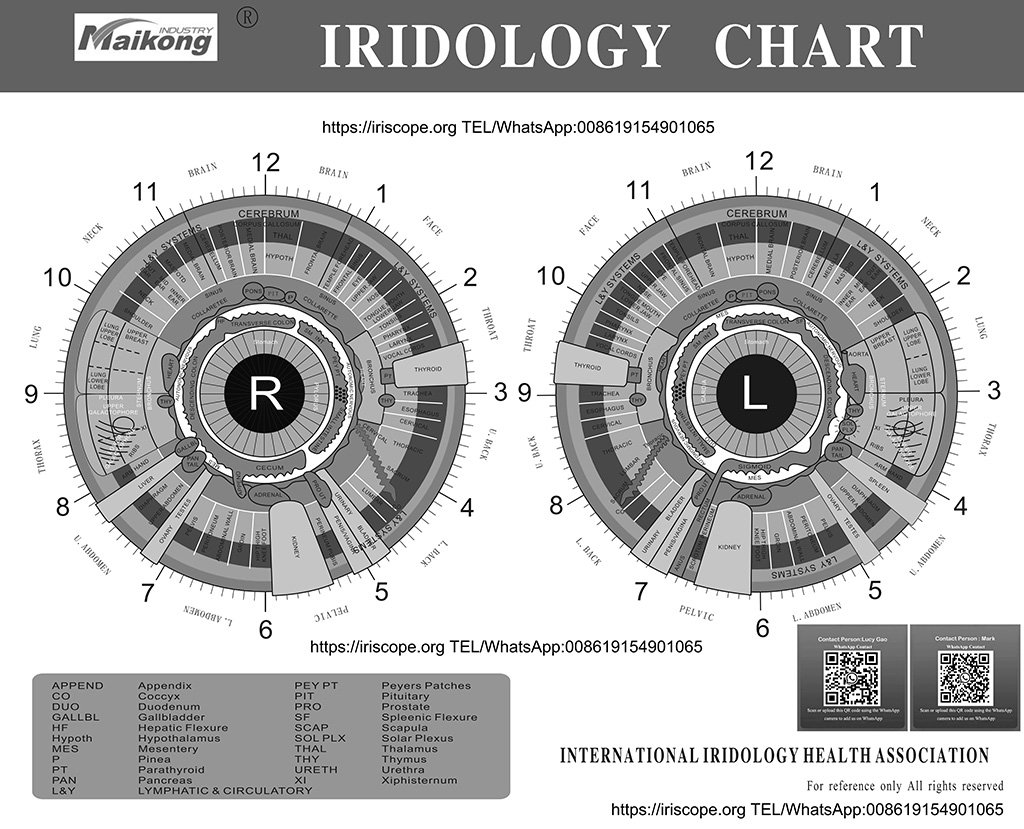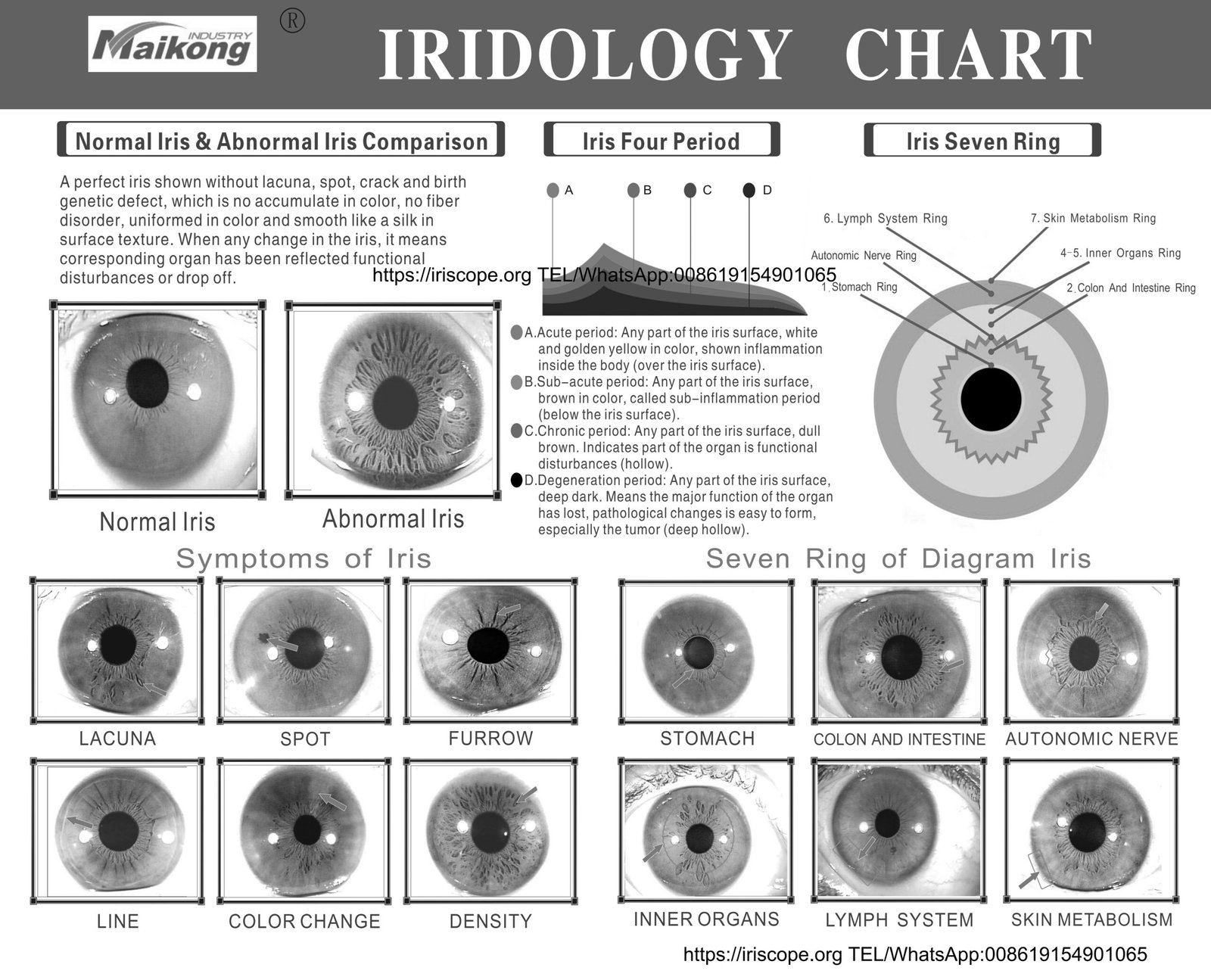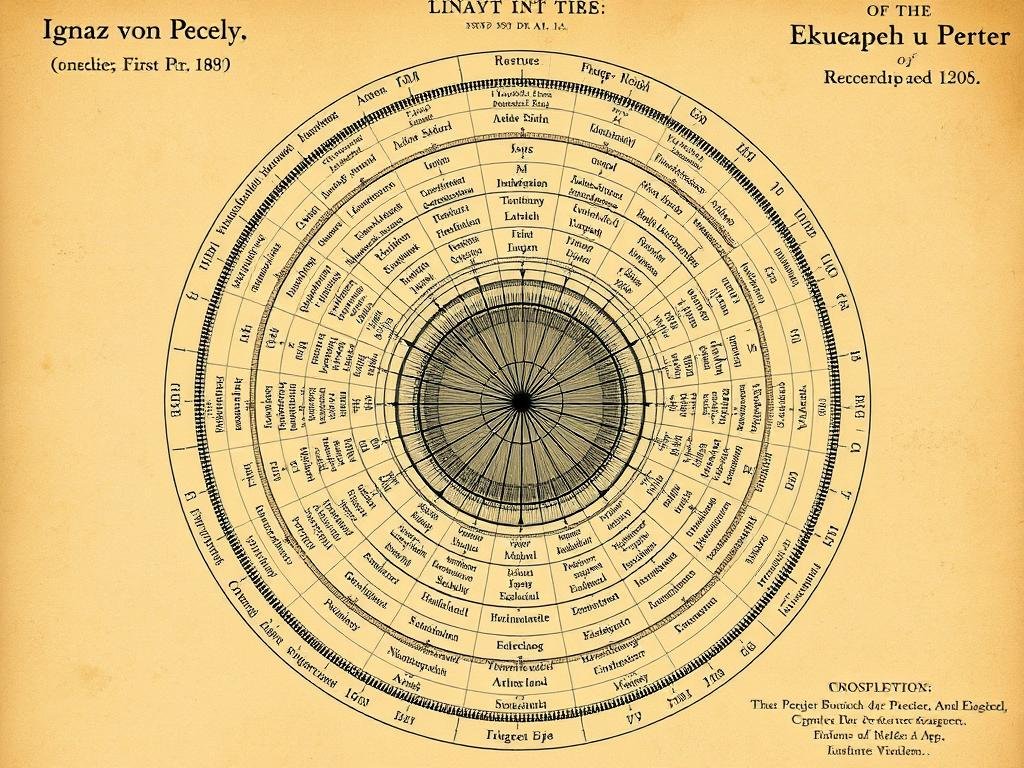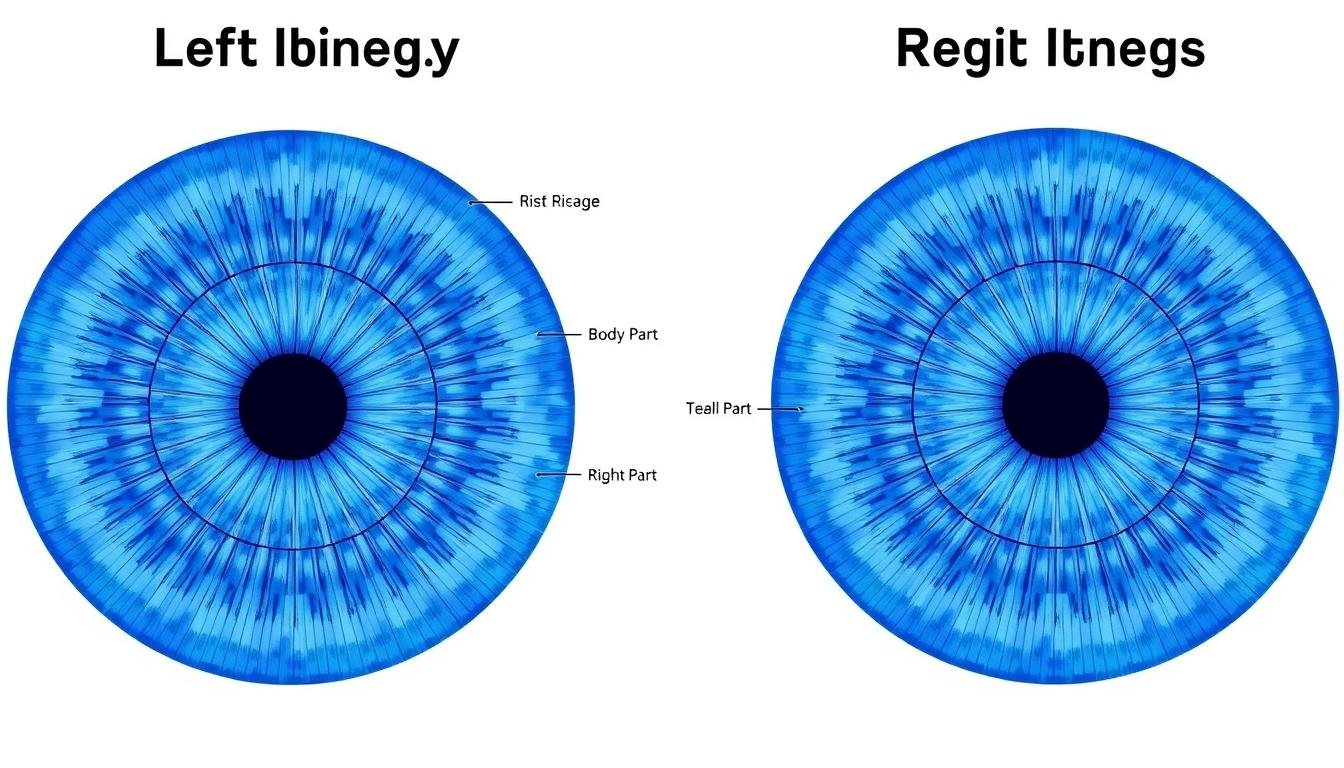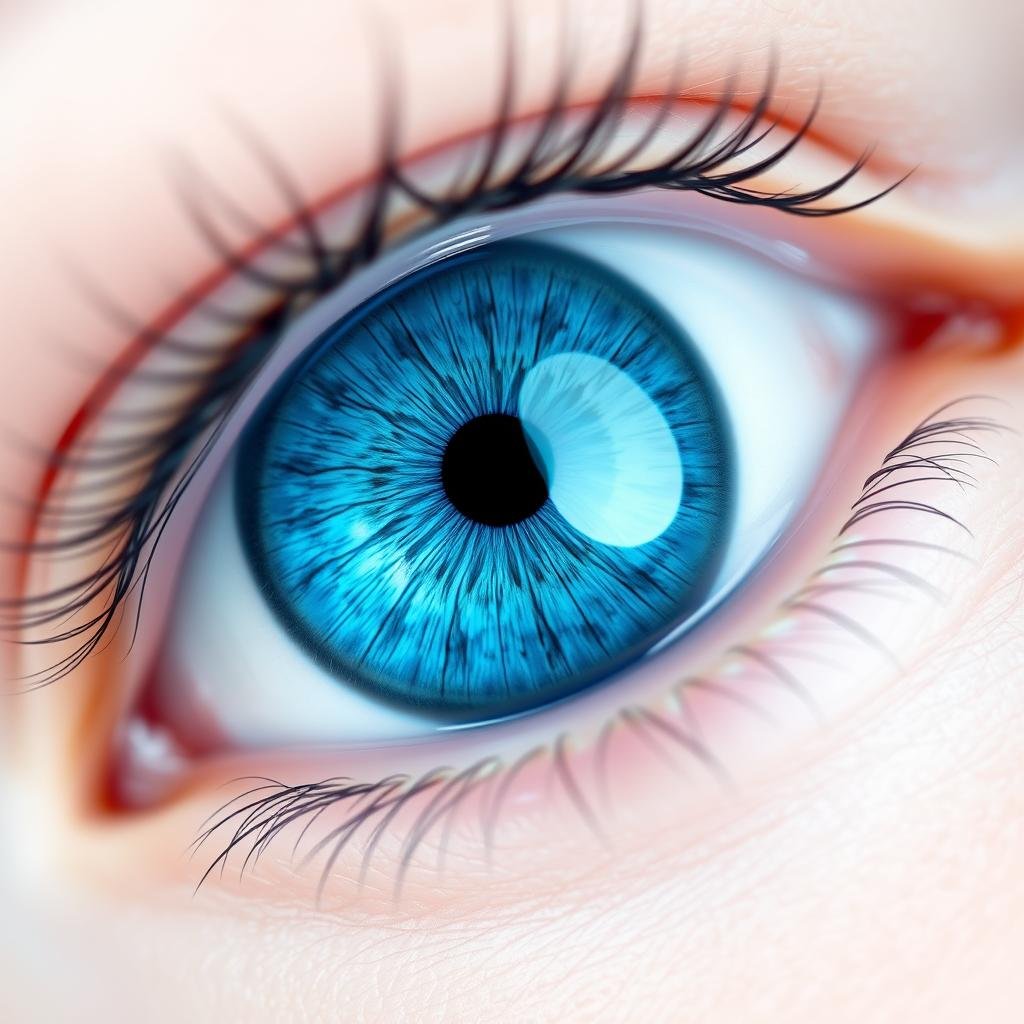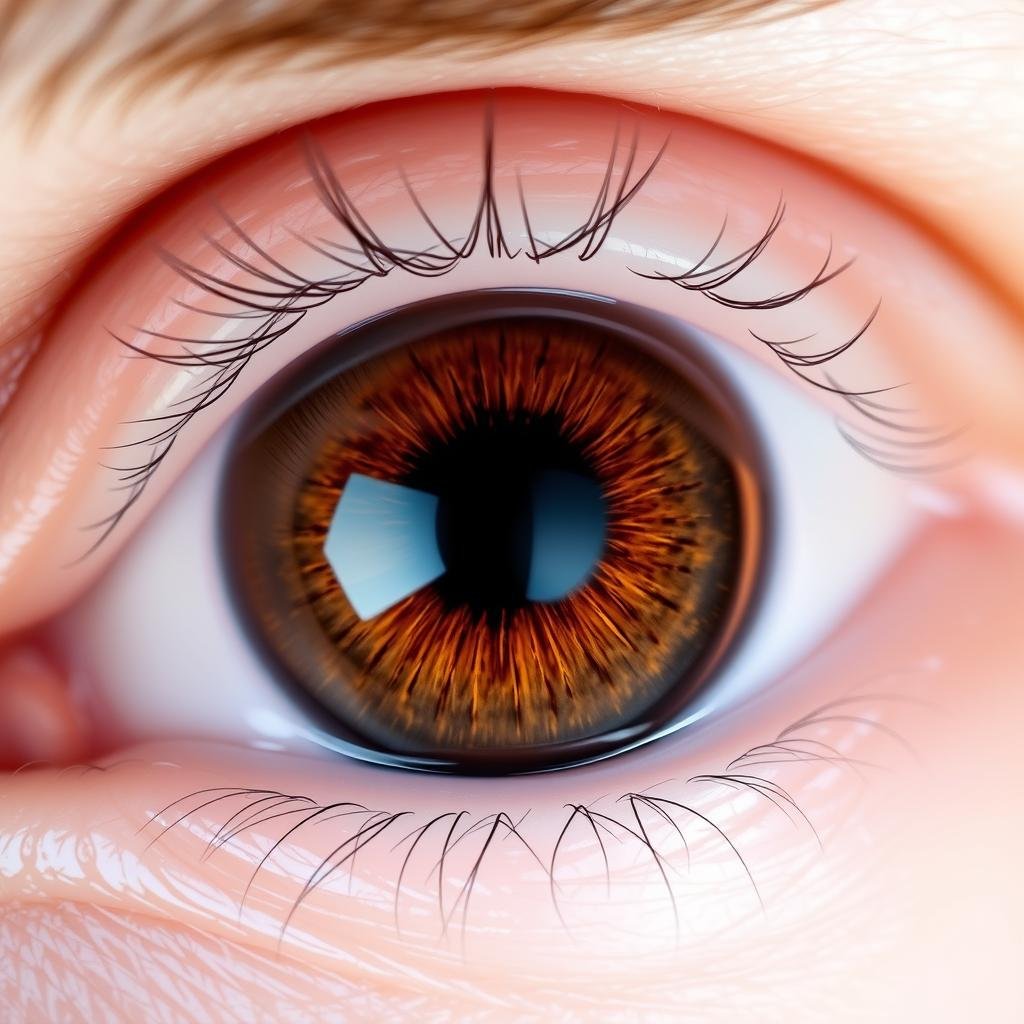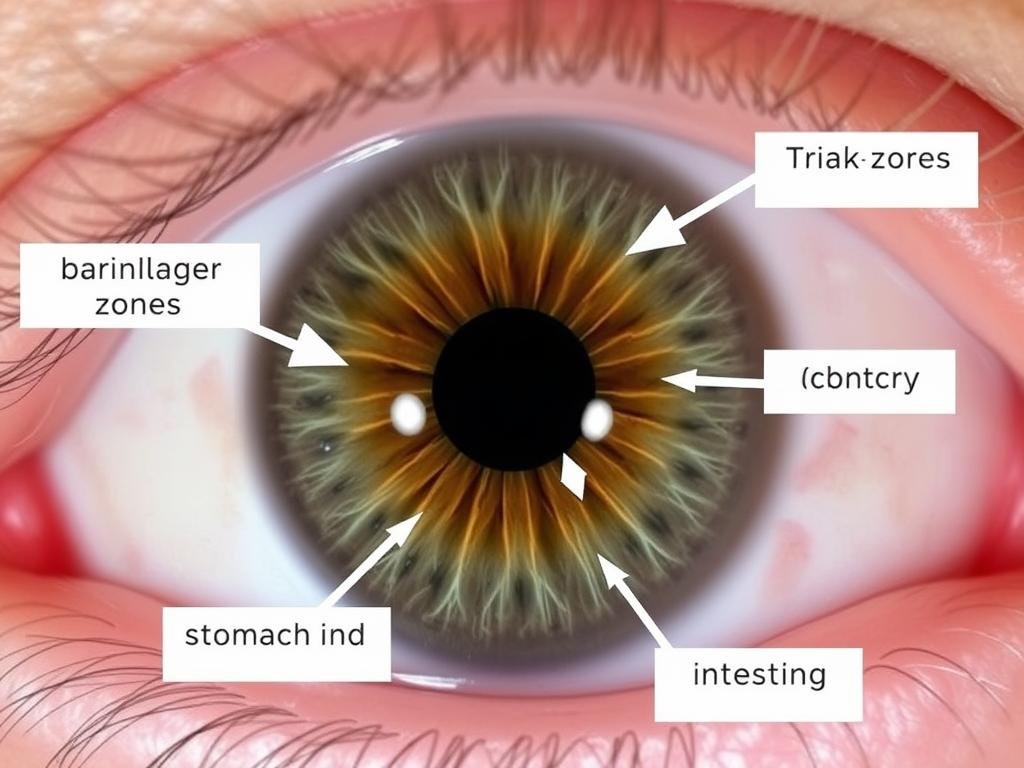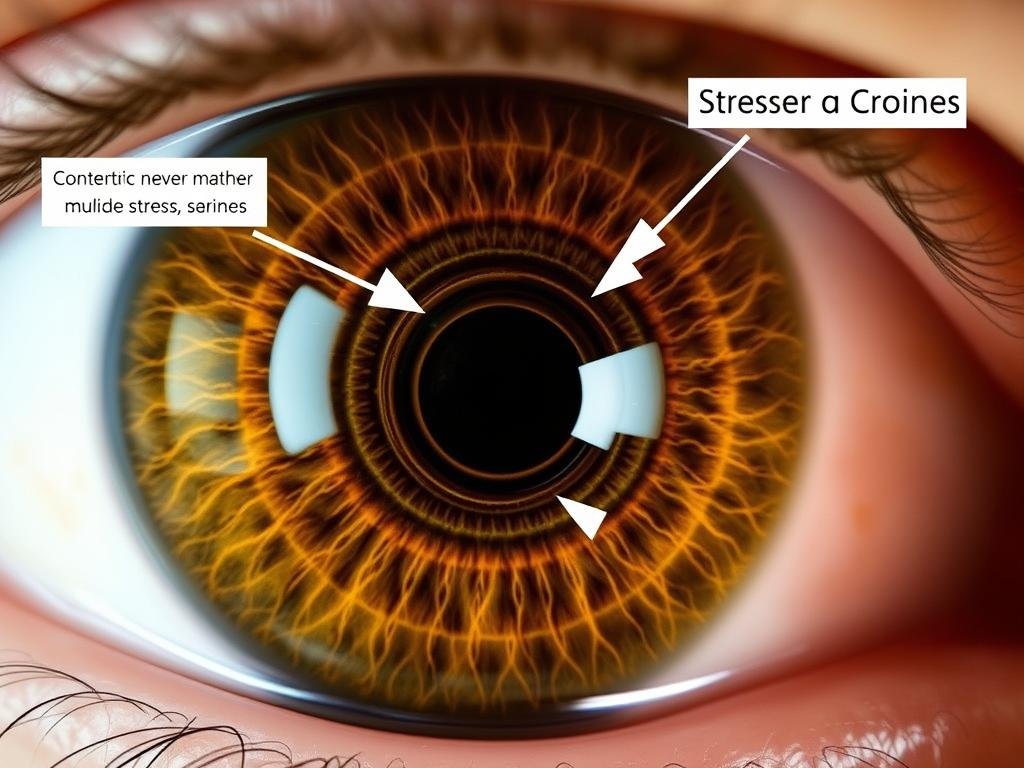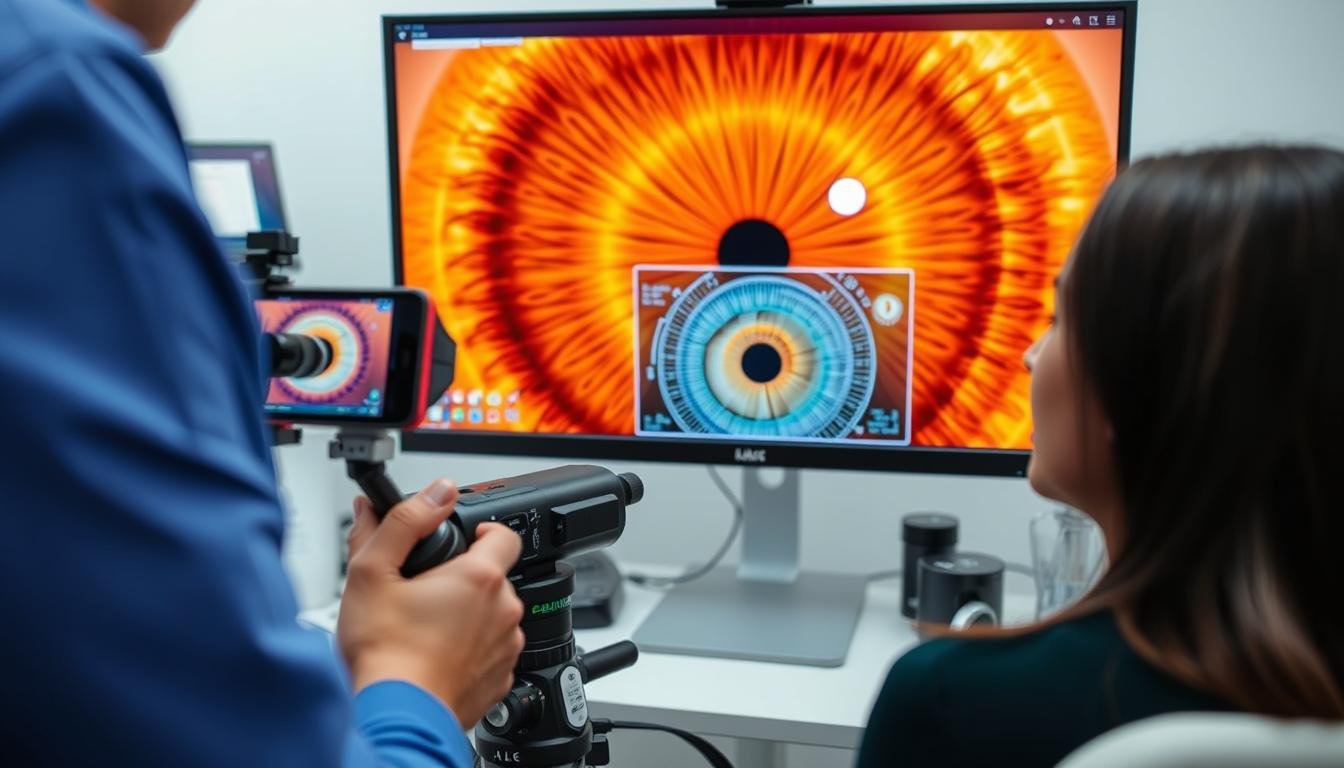iridología es el estudio del iris, la parte coloreada del ojo, como método de análisis del estado de salud de una persona. Esta práctica de salud alternativa se basa en la teoría de que cada área del iris corresponde a un órgano o sistema corporal específico, con cambios en los patrones, colores y marcas del iris que potencialmente indican diversas condiciones de salud. Las cartas de iridología, que datan del siglo XIX, sirven como mapas detallados que los profesionales utilizan para “leer” el iris e identificar posibles desequilibrios de salud antes de que se manifiesten como síntomas físicos.


Las raíces históricas de la iridología
Los fundamentos de la iridología moderna se remontan a Ignaz von Peczely, un médico húngaro que desarrolló el concepto por primera vez en la década de 1860. Según cuenta la historia, von Peczely notó una raya oscura en el iris de un búho después de que el pájaro sufriera una fractura en una pata. Esta observación lo llevó a plantear la hipótesis de una conexión entre las marcas del iris y los traumas físicos o las condiciones de salud.
En 1881, von Peczely publicó su primer cuadro de iridología, mapeando varias regiones del iris con las correspondientes partes y sistemas del cuerpo. Su trabajo fue posteriormente ampliado por el homeópata sueco Nils Liljequist, quien observó cambios en su propio iris después de tomar medicamentos. En la década de 1950, el quiropráctico estadounidense Bernard Jensen había desarrollado aún más estos conceptos, creando el sistema de cartas iridológicas más utilizado y que sigue siendo influyente en la actualidad.



Una de las primeras cartas iridológicas creadas por Ignaz von Peczely en la década de 1880.
Descargue su guía de referencia de gráficos de iridología gratuita
Obtenga acceso instantáneo a nuestra tabla de iridología imprimible con explicaciones detalladas de las zonas y una guía de interpretación para principiantes.
Descargar Guía GRATIS
Comprender las zonas de iridología
Las cartas de iridología suelen dividir el iris en aproximadamente 80 a 90 zonas, cada una de las cuales corresponde a diferentes órganos y sistemas corporales. Estas zonas están dispuestas en un patrón radial, similar a rebanadas de un pastel, que se extiende desde la pupila (centro) hasta el borde exterior del iris. El iris izquierdo generalmente se asocia con el lado izquierdo del cuerpo, mientras que el iris derecho corresponde al lado derecho.


Gráfico iridológico del ojo izquierdo que muestra las correspondencias de los órganos.
Zonas clave del iris y sus correspondencias
- El estómago y los intestinos están representados en la zona central que rodea la pupila.
- El corazón y los pulmones aparecen en los cuadrantes superiores de ambos iris.
- El hígado está asignado principalmente al iris derecho.
- El bazo y el páncreas se encuentran principalmente en el iris izquierdo.
- Los riñones y los órganos reproductivos aparecen en los cuadrantes inferiores.
- El sistema linfático está representado en el borde exterior de ambos iris.
- El cerebro y el sistema nervioso están asignados a las secciones superiores.
Importancia del ojo izquierdo frente al derecho en iridología
En iridología, los iris izquierdo y derecho proporcionan información diferente sobre el estado de salud del cuerpo. Según los profesionales, el iris derecho refleja principalmente el estado de los órganos del lado derecho del cuerpo, incluidos el hígado, la vesícula biliar y el colon ascendente. El iris izquierdo corresponde a órganos del lado izquierdo, como el corazón, el bazo y el colon descendente.
| Sistema corporal | Iris izquierdo | iris derecho |
| Digestivo | Estómago, colon descendente, sigmoide | Hígado, Vesícula Biliar, Colon Ascendente |
| Circulatorio | corazón, bazo | Cámaras del corazón derecho |
| Respiratorio | Pulmón izquierdo | Pulmón derecho |
| Urinario | Riñón izquierdo | Riñón derecho |
| Reproductivo | Ovario/Testículo Izquierdo | Ovario/Testículo derecho |

Comparación de mapas de iris izquierdo y derecho en análisis de iridología.
Decodificación de símbolos de la tabla de iridología
Las cartas de iridología utilizan varios símbolos, colores y patrones para representar diferentes condiciones de salud y fortalezas o debilidades constitucionales. Comprender estos indicadores visuales es esencial para cualquiera que desee interpretar una lectura del iris.
Codificación de colores en gráficos de iridología
El color base del iris proporciona información fundamental sobre el tipo constitucional de una persona y sus tendencias de salud inherentes:
iris azul
Indica constitución linfática. Puede sugerir sensibilidad a problemas respiratorios y linfáticos.
iris marrón
Indica constitución hematógena (relacionada con la sangre). Asociado con una mejor circulación, pero con potencial para problemas hepáticos y digestivos.
iris mixto
Indica constitución biliar. Puede sugerir tendencias mixtas y posible sensibilidad al estrés y trastornos digestivos.
Guía de interpretación de cartas de iridología
Más allá del color base del iris, las tablas de iridología identifican varias marcas y patrones que pueden indicar condiciones de salud específicas:
- Laguna – Áreas cerradas, a menudo oscuras, que pueden indicar debilidades o lesiones inherentes en los órganos correspondientes.
- Criptas – Pequeñas manchas oscuras que pueden sugerir acumulación de toxinas o daño celular.
- Radio solar – Líneas en forma de radios que irradian desde la pupila, lo que podría indicar irritación nerviosa.
- pigmentos – Manchas de colores que pueden representar depósitos tóxicos o acumulaciones de drogas.
- Anillos – Formaciones circulares que podrían indicar diversas condiciones sistémicas.
- Anillos nerviosos – Círculos concéntricos que pueden sugerir tensión nerviosa o estrés.

Marcas y patrones comunes del iris en el análisis de iridología.
“El iris nunca miente. Registra cambios en los tejidos de los órganos correspondientes del cuerpo. El iris es para el médico lo que la esfera exterior es para el relojero.”
– Bernard Jensen, pionero de la iridología moderna
Explore nuestra herramienta interactiva de iridología
Descubra lo que los patrones de su iris podrían revelar sobre su salud con nuestra herramienta interactiva fácil de usar.
Pruebe la herramienta interactiva
Estudios de casos de gráficos de iridología
Para comprender mejor cómo se aplican las tablas de iridología en la práctica, examinemos algunos ejemplos de estudios de caso que demuestran cómo los profesionales interpretan varios signos del iris:
Estudio de caso 1: Análisis del sistema digestivo
Este iris muestra múltiples lagunas en la zona del estómago y del intestino (área central que rodea la pupila). Según la teoría de la iridología, estas áreas cerradas y más oscuras pueden indicar debilidades inherentes en el sistema digestivo, que potencialmente se manifiestan como problemas con la absorción de nutrientes o condiciones inflamatorias.
Estudio de caso 2: Patrones de estrés
Este iris muestra anillos nerviosos prominentes (círculos concéntricos) en todo el iris. En el análisis de iridología, estos patrones a menudo se asocian con tensión nerviosa, estrés crónico y posible fatiga suprarrenal. La densidad y el número de anillos pueden indicar la gravedad y la duración de la exposición al estrés.
Aplicaciones modernas de la iridología
Si bien la iridología tiene raíces históricas en el siglo XIX, continúa evolucionando y encontrando aplicaciones en las prácticas de salud holística contemporáneas. Hoy en día, muchos profesionales integran la iridología con otros enfoques complementarios para crear una evaluación de la salud más completa.

Practicante de iridología moderno que utiliza tecnología de imágenes digitales
Integración con la Medicina Holística
Muchos profesionales de la salud holística incorporan la iridología como un componente de un protocolo de evaluación más amplio. En lugar de utilizarlo como una herramienta de diagnóstico independiente, combinan el análisis del iris con:
- Asesoramiento nutricional para abordar posibles carencias
- Recomendaciones de medicina herbaria basadas en tipos constitucionales.
- Modificaciones del estilo de vida adaptadas a las tendencias de salud individuales.
- Técnicas de manejo del estrés para quienes muestran indicadores de estrés.
- Protocolos de desintoxicación para personas con signos de acumulación de toxinas
Iridología digital
La tecnología moderna ha transformado la práctica de la iridología a través de software de análisis e imágenes digitales de alta resolución. Estas herramientas permiten a los profesionales capturar imágenes detalladas del iris, mejorar características específicas y mantener registros para rastrear los cambios a lo largo del tiempo. Algunos programas incluso ofrecen análisis automatizados basados en gráficos de iridología establecidos.
Limitaciones diagnósticas y perspectiva científica
Es importante tener en cuenta que la iridología se considera una práctica de salud alternativa y generalmente no es aceptada por la medicina convencional. Los estudios científicos que examinan la validez de la iridología como método de diagnóstico han producido resultados mixtos, y la mayoría de las organizaciones médicas convencionales no la reconocen como una herramienta de diagnóstico confiable.
Descargo de responsabilidad de salud importante
La iridología no debe utilizarse como sustituto de un diagnóstico o tratamiento médico adecuado. Si tiene problemas de salud, consulte siempre con un proveedor de atención médica calificado. La iridología puede utilizarse como herramienta de evaluación complementaria, pero no debe retrasar la atención médica adecuada.
Comparación de los principales sistemas de gráficos de iridología
A lo largo de los años se han desarrollado varios sistemas de cartas iridológicas diferentes, cada uno con su propio enfoque para la interpretación del iris. La siguiente tabla compara cinco sistemas principales utilizados por los profesionales en todo el mundo:
| Sistema de gráficos | Origen | Características clave | Número de zonas | Enfoque especial |
| Gráfico de Jensen | Estados Unidos (Bernard Jensen) | Mapeo detallado de órganos, factores de riesgo de tiempo. | 86 | Deficiencias nutricionales |
| Gráfico alemán | Alemania (Josef Deck) | Base embriológica, grupos de órganos. | 60 | Tipos constitucionales |
| Carta rusa | Rusia (E. Velkhover) | Integrado con reflexología | 80 | Conexiones neurológicas |
| Modelo loco | Australia (Denny Ray Johnson) | Personalidad y patrones emocionales. | Varía | Rasgos psicológicos |
| Gráfico de cinco elementos | China (adaptado de TCM) | Basado en la Medicina Tradicional China | 5 regiones principales | Meridianos de energía |
Únase a nuestra comunidad de iridología
Conéctese con otros entusiastas y profesionales certificados para profundizar su comprensión de la iridología y los enfoques de salud natural.
Únete a la comunidad
Preguntas frecuentes sobre listas de iridología
¿Qué tan precisas son las tablas iridológicas para la evaluación de la salud?
Se debate la precisión de la iridología como herramienta de diagnóstico. Si bien muchos profesionales holísticos aportan información valiosa a partir del análisis del iris, los estudios científicos han producido resultados mixtos. La iridología se considera mejor como una herramienta de evaluación complementaria que como un método de diagnóstico definitivo. Puede proporcionar indicaciones de tendencias constitucionales y áreas potenciales de debilidad, pero no debe reemplazar el diagnóstico médico convencional.
¿Puedo aprender a leer mi propio iris usando tablas de iridología?
Si bien la autoevaluación básica es posible con el estudio, la interpretación precisa del iris generalmente requiere capacitación y experiencia. El examen adecuado del iris también requiere equipo especializado para capturar imágenes claras y ampliadas. Muchas sutilezas en el análisis del iris son difíciles de identificar correctamente para los principiantes. Si está interesado en aprender iridología, considere comenzar con recursos educativos y quizás consultar con un profesional experimentado para obtener orientación.
¿Las tablas de iridología difieren entre los profesionales?
Sí, existen varios sistemas de gráficos de iridología diferentes, como se describe en nuestra tabla comparativa. Si bien comparten principios fundamentales, pueden diferir en la ubicación exacta de las zonas de los órganos, el número de divisiones y su enfoque interpretativo. Esta variación a veces puede llevar a lecturas diferentes por parte de diferentes profesionales. La mayoría de los profesionales modernos tienden a utilizar el sistema Jensen o el sistema alemán (Deck) como referencia principal.
¿Pueden las tablas de iridología detectar afecciones médicas graves?
Los practicantes de iridología generalmente no pretenden diagnosticar enfermedades específicas, sino identificar áreas de posible debilidad o estrés en el cuerpo. Si bien algunos médicos sugieren que ciertos signos del iris pueden correlacionarse con condiciones de salud particulares, la iridología nunca debe usarse como el único método para detectar condiciones médicas graves. Consulte siempre con un proveedor de atención médica calificado para obtener un diagnóstico médico adecuado y el tratamiento de problemas de salud.
Adoptando la sabiduría de los gráficos de iridología
Las cartas de iridología ofrecen una ventana fascinante a las posibles conexiones entre los patrones del iris y la salud en general. Si bien la práctica continúa siendo debatida en los círculos científicos, muchos entusiastas de la salud holística encuentran valor en los conocimientos personalizados que puede proporcionar el análisis del iris.
Ya sea que se acerque a la iridología con curiosidad, escepticismo o algo intermedio, comprender los principios básicos de la topografía del iris puede profundizar su apreciación de la complejidad del cuerpo humano y sus sistemas interconectados. Como ocurre con cualquier enfoque de salud, la iridología es más beneficiosa cuando se integra cuidadosamente en una estrategia de bienestar integral que incluye nutrición adecuada, ejercicio regular, manejo del estrés y atención médica adecuada.

Estudiar cartas iridológicas requiere paciencia y atención al detalle.
Obtenga su análisis de gráfico de iridología personalizado
Descubra lo que sus patrones de iris podrían revelar sobre sus fortalezas constitucionales y posibles consideraciones de salud.
Análisis de solicitudes




